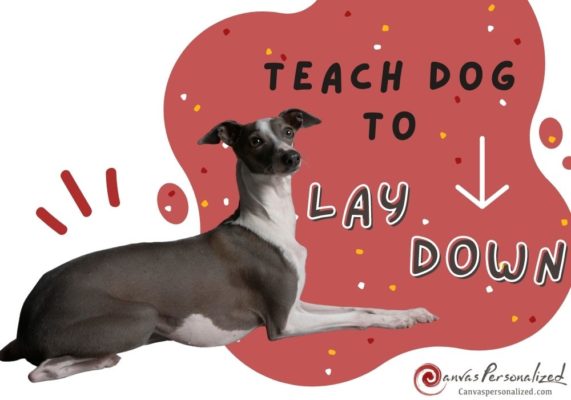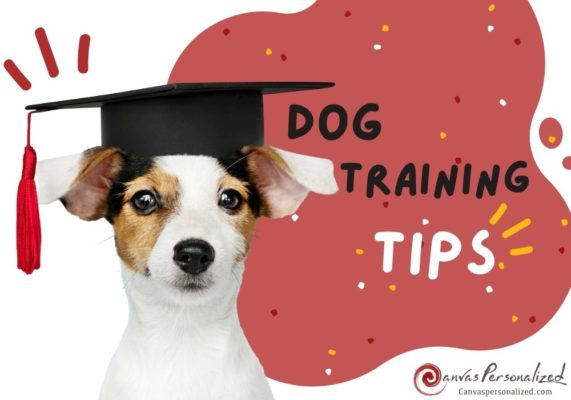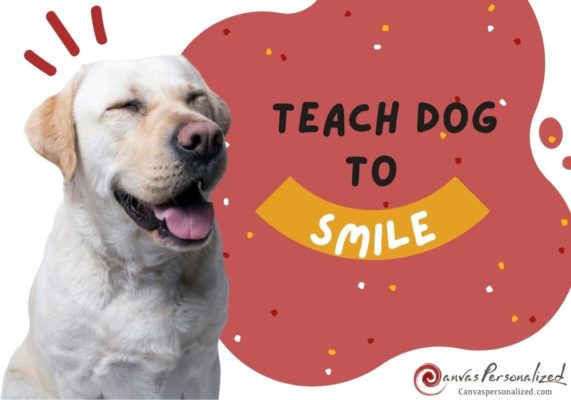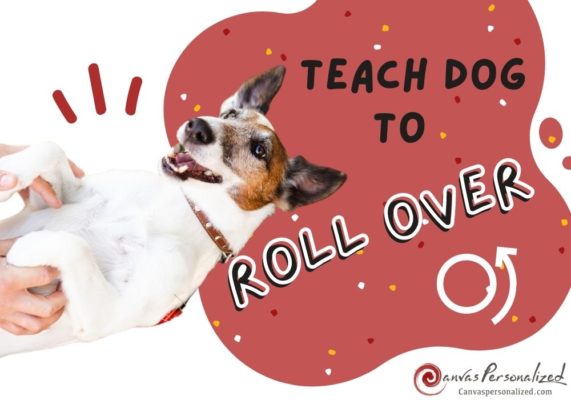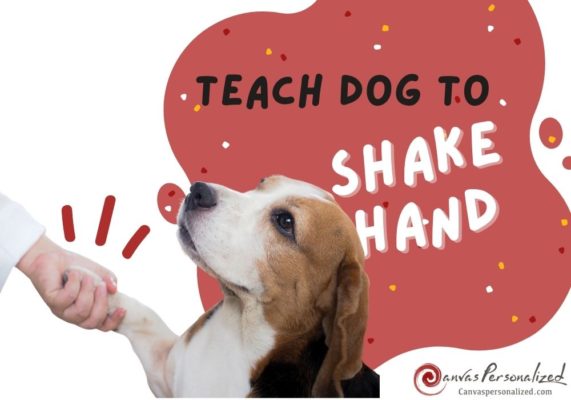Is your furry friend turning your home into a chaotic playground? Do you dream of peaceful walks without the leash tug-of-war? Let’s learn the secrets of effective dog training and transform your pup into a well-behaved, happy companion. Our expert dog training tips will equip you with the knowledge and techniques to build a stronger bond with your dog while mastering essential commands and even teaching fun tricks. Get ready to unleash your dog’s potential with Canvas Personalized!
1. Successful Dog Training Tips for Beginners
1.1. Keep it short and frequent
Frequent, brief training sessions throughout the day are far more effective than lengthy ones. The American Kennel Club suggests limiting each session to five minutes to prevent distractions and frustration.
Additionally, dogs often struggle to understand that a command means the same thing in different environments. Therefore, it’s beneficial to practice training in various locations, with different people, and under varying distractions. This ensures your dog learns to respond correctly to the same command consistently, regardless of the situation.
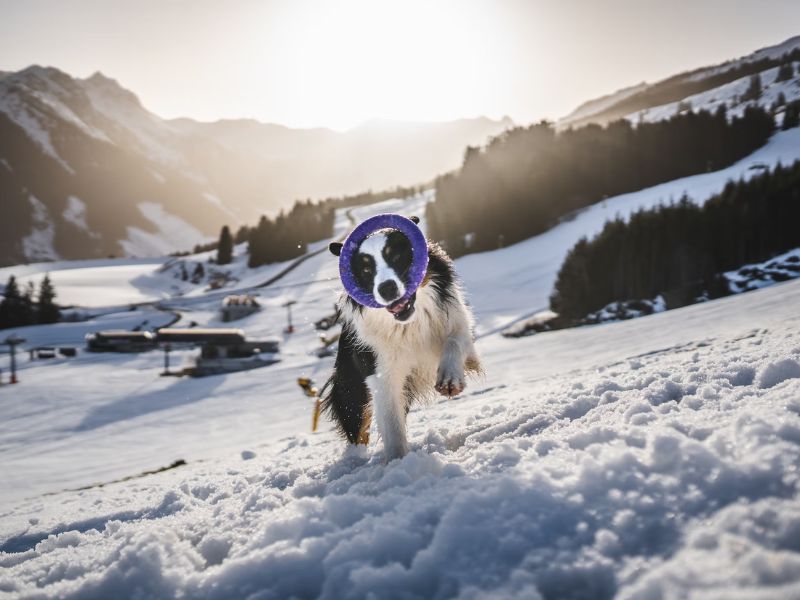
1.2. Positive reinforcement dog training
Dogs, like people, appreciate being rewarded for their efforts. While they love you unconditionally, their happiness isn’t solely dependent on pleasing you. People often expect their dogs to obey without any incentive, but positive reinforcement—praise, treats, or playtime—is crucial for motivating good behavior. Without it, dogs will seek rewards on their own, often through undesirable actions. By rewarding, you not only reinforce those behaviors but also make your dog eager to please you in the future.
1.3. Choose the right reward
Positive reinforcement training effectively teaches and reinforces desired behaviors in dogs by rewarding them for their actions. However, it’s important to understand what your dog actually finds rewarding. Not every treat or toy will motivate them.
Identify what your dog truly enjoys and rank those rewards in a hierarchy. Use lower-value rewards, such as kibble or carrot sticks, for simple tasks, and save the most desirable ones, like chicken or playing fetch, for more challenging situations or behaviors that are difficult to learn.

1.4. Try training before mealtimes or right after a nap
If food is a big motivator for your dog, try training them with kibble or treats before mealtime to keep them focused. For puppies, it’s important to schedule training sessions after naps, when they’re alert and ready to learn, rather than when they’re tired and sleepy.
1.5. Be consistent
Maintaining consistency is key in dog training. This means using the same words and tone of voice when giving commands. It’s equally important for everyone in your household to follow the same rules. If different family members have different rules, it can confuse your dog and make it harder for them to learn. For example, if you don’t allow your dog to sit on the couch while your partner does, they won’t understand the distinction and will likely continue jumping on it.
1.6. Break behaviors down into smaller parts
When teaching complex behaviors like “stay” or trying to correct unwanted behaviors, it’s helpful to start small. Break down the desired behavior into smaller parts and reward your dog for each progressive step. For instance, when teaching “come,” initially reward even a single step towards you. As your dog grasps the concept, gradually increase the distance and difficulty, building up to the full behavior.
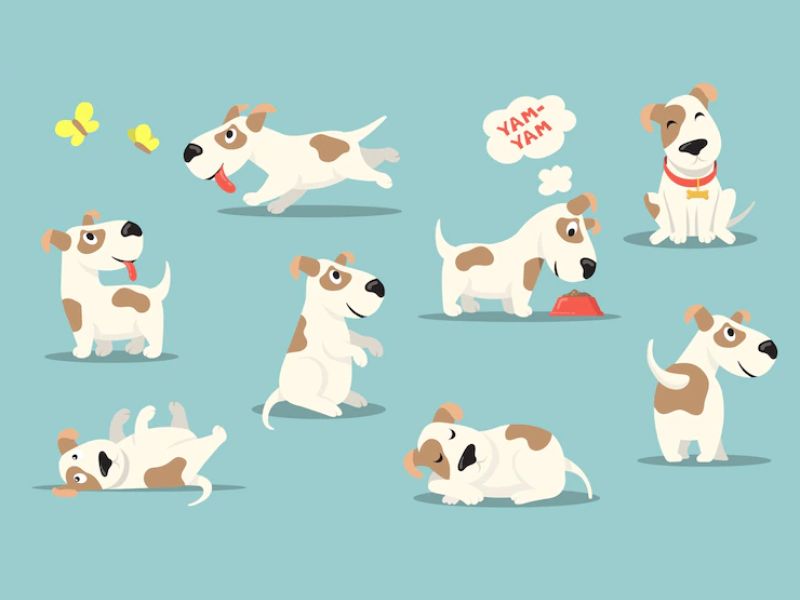
1.7. Be patient
Remember, your dog is learning a new language and adapting to your expectations. Progress may not always be linear, and there will be setbacks along the way. Avoid getting frustrated if your dog doesn’t grasp a concept immediately. Instead, take a deep breath, go back to basics if needed, and celebrate even the smallest victories.
1.8. Keep it positive
Training should be an enjoyable experience for both you and your dog. Maintain a positive atmosphere and keep things engaging by incorporating short play breaks between training repetitions.
1.9. Use your hands
Although we wish they could, dogs don’t process language like we do. Many dogs respond more effectively to hand signals than to spoken commands. Therefore, consider combining both verbal and hand signals or even starting with just hand signals and introducing verbal commands later.
1.10. Understanding dog body language
Effective training isn’t just about teaching commands—it’s about understanding your dog’s communication. Dogs primarily express themselves through body language, a complex system of postures, facial expressions, and movements that reveal their emotions and intentions. Learning to interpret these signals is key to building a strong bond and addressing potential issues before they escalate.
1.11. Consult a professional dog trainer or attend a training class
If you’re having trouble training your dog, don’t be afraid to reach out to a professional dog trainer or enroll in a training class. They can offer valuable expertise and years of experience to help you and your dog overcome challenges. Having encountered a wide range of issues in their careers, they’ll likely have solutions for any problems you might be facing.

2. Basic Training Commands & Techniques
2.1. Potty training dog tips
House training should start around 12-16 weeks of age when puppies gain bladder and bowel control. Establish a routine by taking them outside first thing in the morning, after meals and naps, and before bedtime. Confine your puppy to a designated area when unsupervised. When at home, close off other rooms and closely monitor them, even using a leash to keep them close.
Take your puppy to the same spot each time to strengthen scent association. Reward them with treats or praise after they finish their business. Over time, you’ll recognize signs like whining or circling, indicating their need to go.
If you catch your puppy eliminating indoors, immediately take them to their potty spot and praise them. Avoid punishment or pushing their nose in the urine, as this only teaches them to hide their accidents. Clean accidents with an enzyme spray to remove the scent and prevent future accidents in the same spot.

2.2. Teach a dog to sit
Teaching your dog to sit is a valuable skill for many situations, making it one of the first commands to focus on.
To do so, stand in front of your dog and hold a treat or toy near their nose. Slowly lift it over their head, encouraging them to sit as they look up. Avoid pushing on their back, as the goal is for them to learn independently. Once they understand the movement, add the verbal cue “sit” while lifting the treat to associate the word with the action.

2.3. Teaching a dog to come when called
Teaching your dog to come can be crucial for their safety and your peace of mind. Begin in a quiet environment, standing close to your dog. Choose a specific command like “here” or “come” (excluding their name) and use an upbeat tone to encourage them. Utilize sounds, squeaky toys, or anything that grabs their attention. Shower them with praise and excitement when they reach you, but avoid overwhelming them if they seem nervous.
Avoid scolding or punishing your dog if they take time to respond, as you want them to associate coming to you with positive experiences. As they improve, introduce distractions like squeaky toys or other people during training.
When practicing outdoors, use a long leash to guide them. If your dog doesn’t respond, use the leash to walk towards them, but don’t pull them.

2.4. Training a dog to walk on a leash
Every dog should learn to walk calmly on a leash. Aside from the fact that most locations have leash restrictions, keeping your dog on a leash may be crucial to ensure their safety.
Start by letting your dog get comfortable wearing a collar or harness indoors. When it’s time for walks, use a regular flat leash and harness, avoiding retractable leashes or other collars. This combination offers better control, a consistent distance for your dog, and is safer and easier to manage. If your dog pulls excessively with a harness, choose one that clips in the front for increased control. Begin with short walks and keep the leash loose for a relaxed experience.
When your dog starts to pull, simply stop and wait for them to stop pulling before continuing. There’s no need to jerk the leash; just patiently wait until they refocus on you. The reward for them is being able to walk again or their favorite treats.
You can incorporate the “heel” command when your dog walks beside you or returns. Remember, dogs learn through exploring their surroundings, so teach commands like “ok” or “go ahead” to allow them to sniff while still maintaining control during walks. Gradually increase walk durations and observe their progress!

2.5. Teaching a dog to play fetch
Fetching isn’t instinctive for all dogs, but most breeds can learn to enjoy it. Some dogs pick it up naturally, while others may need a bit of encouragement. If you’d like to teach your dog to fetch, you can follow these steps:
- Start in a small, enclosed area.
- Show enthusiasm for the ball or toy, rolling or bouncing it to spark your dog’s interest.
- Toss the object a short distance and use the command “fetch.”
- When they retrieve it, say “come” to bring them back to you.
- Repeat this process to reinforce the behavior.

3. Advanced Training for Dogs
Once your dog has mastered basic obedience commands and addressed any behavioral issues, you can explore advanced training techniques and work towards specific goals. This can be a rewarding way to further strengthen your bond and challenge your dog mentally and physically.
3.1. Socialization
Socialization isn’t just for puppies. Even older dogs need ongoing exposure to new people, animals, and environments to maintain their social skills.
Focus on creating positive associations with new experiences. Use rewards, praise, and calm interactions to reinforce good behavior. Just remember, don’t overwhelm your dog with too much stimulation at once. Gradually introduce them to new situations, starting with controlled environments and gradually increasing the level of distraction.

3.2. Trick training
Beyond basic obedience, trick training opens up a world of fun and creative challenges for both you and your dog. It’s a fantastic way to deepen your bond, provide mental stimulation, and show off your dog’s hidden talents.
Many tricks are built upon existing obedience commands. For example, “shake” can be taught by using the “paw” command, or “lie down” can be transformed into “play dead.” Once your dog has mastered the fundamentals, you can unleash your creativity and explore various tricks.
>> Read more:
- How To Teach A Dog To Smile: Easy Tricks In 6 Steps
- How To Teach A Dog To Roll Over Quickly In 3 Easy Parts?
- How To Teach A Dog Its Name In 4 Foolproof Steps-New Tricks
Remember, dog training is an ongoing process that requires patience, consistency, and love. By implementing these expert dog training tips from Canvas Personalized, understanding your dog’s unique needs, and celebrating their progress, you’ll build a stronger bond and enjoy a lifetime of companionship with your well-trained canine friend. Don’t forget that training should be fun for both you and your dog, so embrace the journey and cherish the moments of connection along the way.




